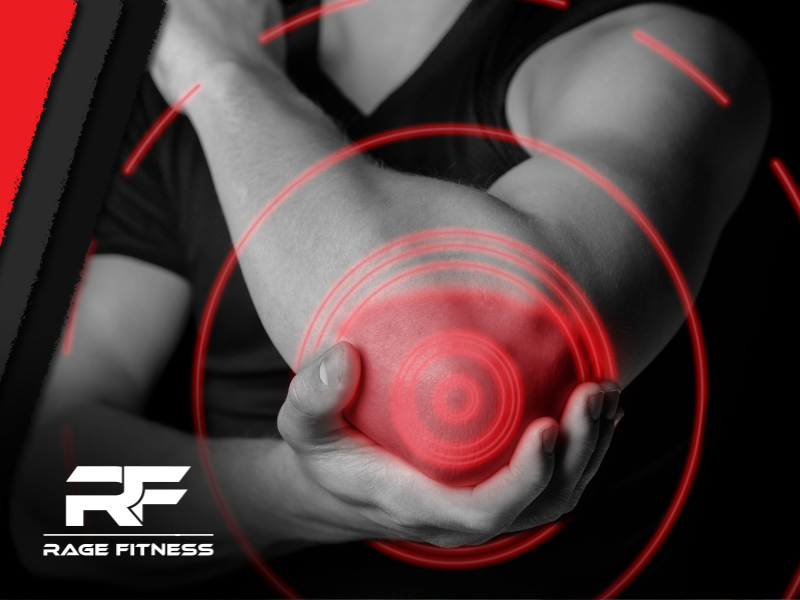Managing Joint Pain for a Better Quality of Life

Mature adults aren't the only people experiencing joint pain these days. People who are overweight, don't exercise, have degenerative illnesses, and low bone density are also impacted by joint pain. If you were a young athlete, the places where you were injured suddenly become inflammed easily and arthritis can develop which can cause limitations in how we move. Our quality of life decreases rapidly if we struggle to walk, crouch, balance, or lack mobility in general. Those of us who are very active can be prevented from living our lives fully because of joint pain. For many of us, joint pain is inevitable based on our lifestyle and genetic factors. But we can do things to manage this pain with exercise, mobility work, rest, and medication. Let's dive in to review easy to follow tips to manage joint pain.
Manage your Joint Pain for a Better Quality of Life
Tips to Manage Joint Pain:
1. Low Impact Exercise
2. Mobility Work, Foam Rolling, and Recovery/Rest
3. Massage Therapy
4. Hot vs Cold Therapy
5. Medication
1. Low Impact Exercise
Thanks to weight bias, many doctors are quick to dismiss a patient's joint pain as caused by something other than obesity. However, joint pain can be the result of a variety of causes including: lower bone density, degenerative disease like arthritis or osteoporosis, injuries, fever, viral infections, and others. Depending on the type of cause for the joint pain, there are ways in which we can lubricate our joints with exercises which will help reduce pain over time as long as we maintain our routine.
Resistance bands are a great alternative to weights if you just want to improve your range of motion after an injury. Aerobic activity like walking is wonderful to keep the lower body limber and flexible. Water aerobics offers an option for people who don't enjoy weight training but want the cardiovascular and strength benefits of resistance training.
The important thing with all exercise is to reduce the impact on your joints. Instead of jumping, try just doing squat heel raises to get the heart rate up. Instead of running, march on the spot by lifting your knees high. Cycling is another great low impact exercise that is great for building endurance.
2. Mobility Work, Foam Rolling, and Recovery/Rest
As we age, our muscles get stiffer if we don't regularly stretch, exercise, or do any active sports. To manage joint pain effectively, yoga, tai chi, pilates, and barre are awesome for improve our posture and mobility, and reduce stress. These gentle movements use only our bodyweight and breathwork to move through space. Lengthening our muscles helps to repair and recover and muscle fibres after strenuous activity or injuries.
Using accupressure balls and foam rollers as part of your post-exercise stretch routine can reduce joint pain by helping you move lactic acid buildup out of the muscles so they are less sore. By rolling the fascia, the nerve receptors send a signal to the brain to relax the muscle that is being worked. These tools can help reduce inflammation and increase blood flow to the area for faster recovery.
Many people who are new to exercise falsely believe that the more times they work out, the better their results will be. However, muscles are built during rest periods. When we give our muscles time to repair themselves, we can pick up heavier weights and push harder the next time we are active.
3. Massage Therapy
Most of us neglect our health benefits like massage therapy until the end of the year. By getting regular massages at least once a month, we can help ease our joint pain symptoms. Massage can help us improve blood circulation and relax the muscles around the joints. Deep tissue massage can help us break down scar tissue from sprains, strains, and other injuries and allow the body to repair itself. Reducing stiffness in the muscles improves range of motion.
Since massage helps to push nutrients and blood into your muscles, they can become inflammed temporarily afterwards. That's why some of us get sore the day or two after a massage. Flush out your system after a massage by drinking a lot of water so you can avoid being too sore afterwards. You can also take an epson salt bath to ease muscle soreness after a massage session. Rubbing essential oils on the affected area like peppermint can also help ease pain.
4. Hot vs Cold Therapy
There are benefits to both heat and cold therapy. The temperature you use will depend on what's going on in the body at the time. The first time you experience joint pain perhaps after exercise, there might be a lot of fluid retention and inflammation.
To reduce swelling, you may choose to apply a cold compress to the area or take a cold water bath for 30 seconds to a couple minutes. Use cold therapy on sprains and strains as inflammation will be high after this occurs. If you find your ankles, knees or hips get swollen after a walk, put your feet up on a couple pillows and use an ice pack to reduce fluid retention for 15 minutes. Then remove and allow your body to rest before repeating it again.
Heat therapy is best utilized to help relax muscles prior to exercise. By relaxing muscles beforehand, it helps to boost blood and nutrients to the area the heat is applied to. It doesn't have to be scalding hot to be effective, warm temperature compresses are ok. Hot water baths with epsom salt can soothe muscles after a long day. Remember to only use heat for 15 minutes at a time so you don't accidentally burn yourself.
Note: Do not use heat in the first 48-72 hours after an initial injury as it can increase swelling and make pain worse.
5. Medication
Leave medication as a last resort if you are unable to find relief with the first 4 tips mentioned in the article. Topical analgesics can be purchased cheaply at any pharmacy. Essential oils are also great for aromatherapy benefits to reduce stress and anxiety which could be causing joint pain to flare up.
Acetaminophen (Tylenol), Ibuprofen (Advil), and Naproxen (Aleve) are over the counter medications that can be used for joint pain to bring relief quickly. For severe pain, a doctor may prescribe an opioid medication or Janus kinase (JAK) inhibitors which are a treatment for rheumatoid arthritis.
Please note: Opioids are highly addictive so it's not a good idea to use them long-term without a doctor's supervision.
Joint pain might be inevitable but we can manage it
If you are looking to improve your fitness with low impact training, please ask the experts at Rage Fitness Personal Training Studio to help you build a program that will be easy on the joints but still be effective at building muscle, mobility, and flexibility to help you on the road to becoming pain-free. We focus on building effective programs so clients can focus on doing the work to improve their quality of life. You don't have to live with pain for the rest of your life. Doing light exercises including resistance, weights and low impact cardio can help you manage pain without medications.
We at Rage Fitness Personal Training Studio will do an assessment first to see how you move and what level you are at in terms of your physical conditioning. Whether you are a beginner or advanced exerciser, we will challenge you and build appropriate routines so you can stop wasting time in the gym and start living your life. Book a free demo session or a physical assessment, please call/text us at 1-825-945-7733, or fill out the online contact form today!
HOW WE CAN HELP YOU
4-Week Challenge
Small Group Fitness
Hybrid Training
FAQs
We have an Inbody 270 Scanner that will measure your muscle mass and body fat composition to let you know how you are progressing on your fitness journey. Sometimes, the scale, the mirror, and our clothes don't give us the information we need about whether we are moving in the right direction. For people who have very little to lose or carry weight all over their body instead of one visible area, the Inbody 270 can give you more encouraging information about your progress. We also take measurements and before/after photos so you can see the changes over time.
Our personal training memberships include 1 scan a month.
For our 6 week challenge participants, we include 3 scans as part of your package (beginning, middle, end).
For non-members, we charge the following:
1 scan - $35 + GST
3 scans - $90 + GST
5 scans - $125 + GST
Even coaches need coaches. Everyone struggles to stay motivated at some point or another. When you allow a personal trainer to take over the program planning, they will hold you accountable because they are not driven by your emotions, lack of energy, or personal criticisms. Even if you are a long-time athlete, your programming might be stale and you need someone to refresh it. If you are not having fun working out, you will not enjoy it as much.
We are located in downtown Calgary. This is our only location.
CHOOSE RAGE FITNESS
If you are seeking to lose weight, increase your physical fitness, or transform your body and your life with a superior personal training experience try Rage Fitness, With some of Calgary’s top personal trainers, the team at Rage Fitness is standing by to guide you on your journey to comprehensive wellness. Find out more by calling 1-825-945-7733 today.


